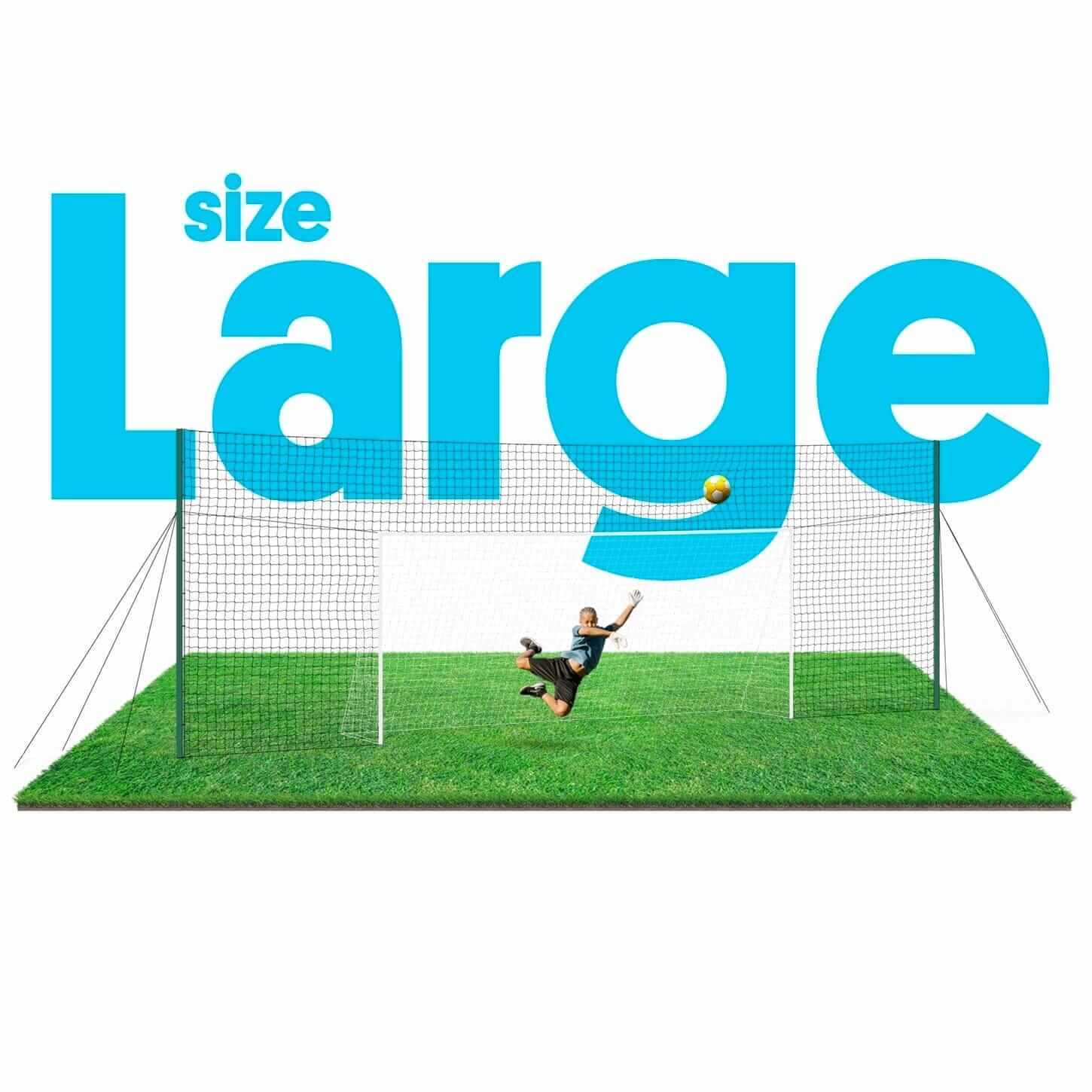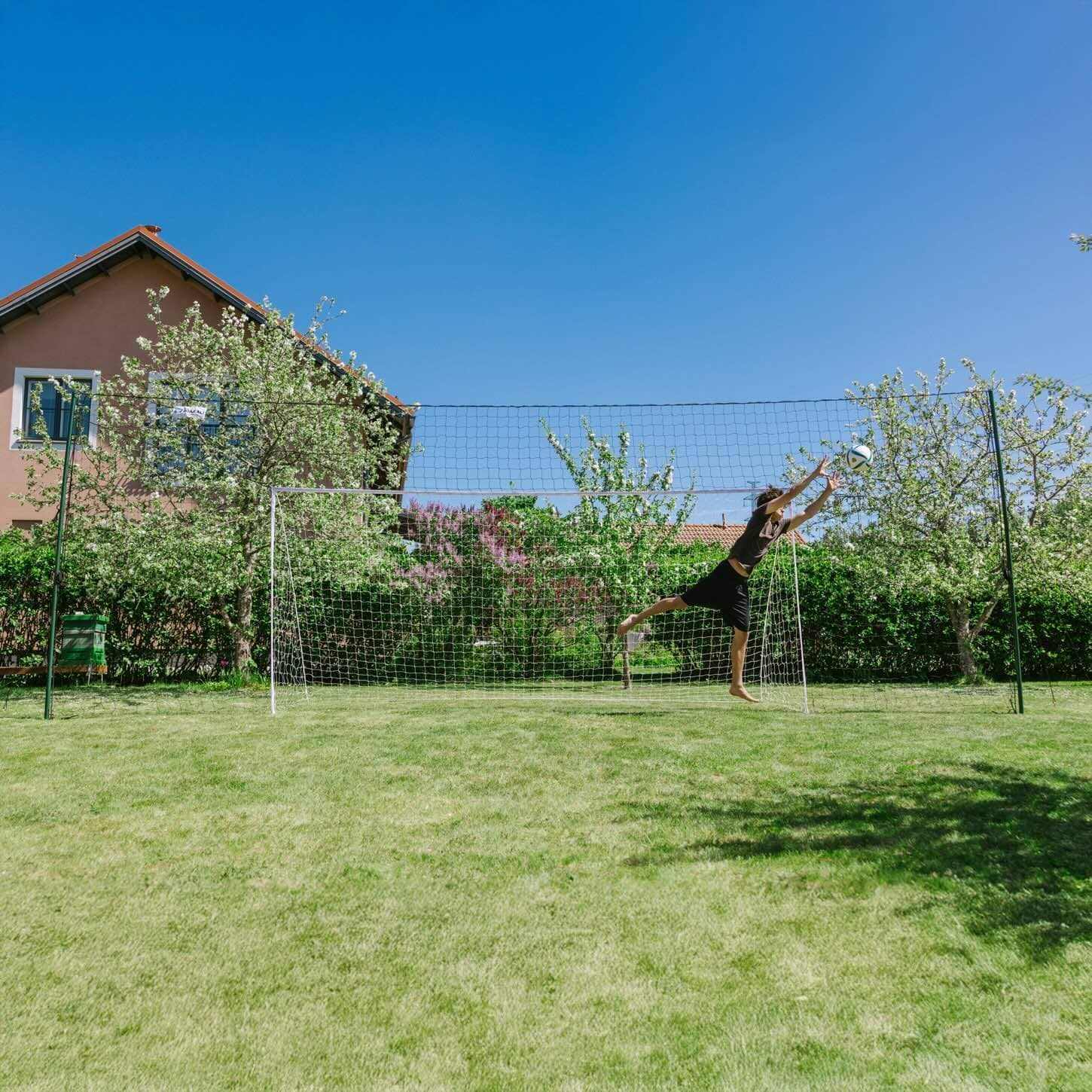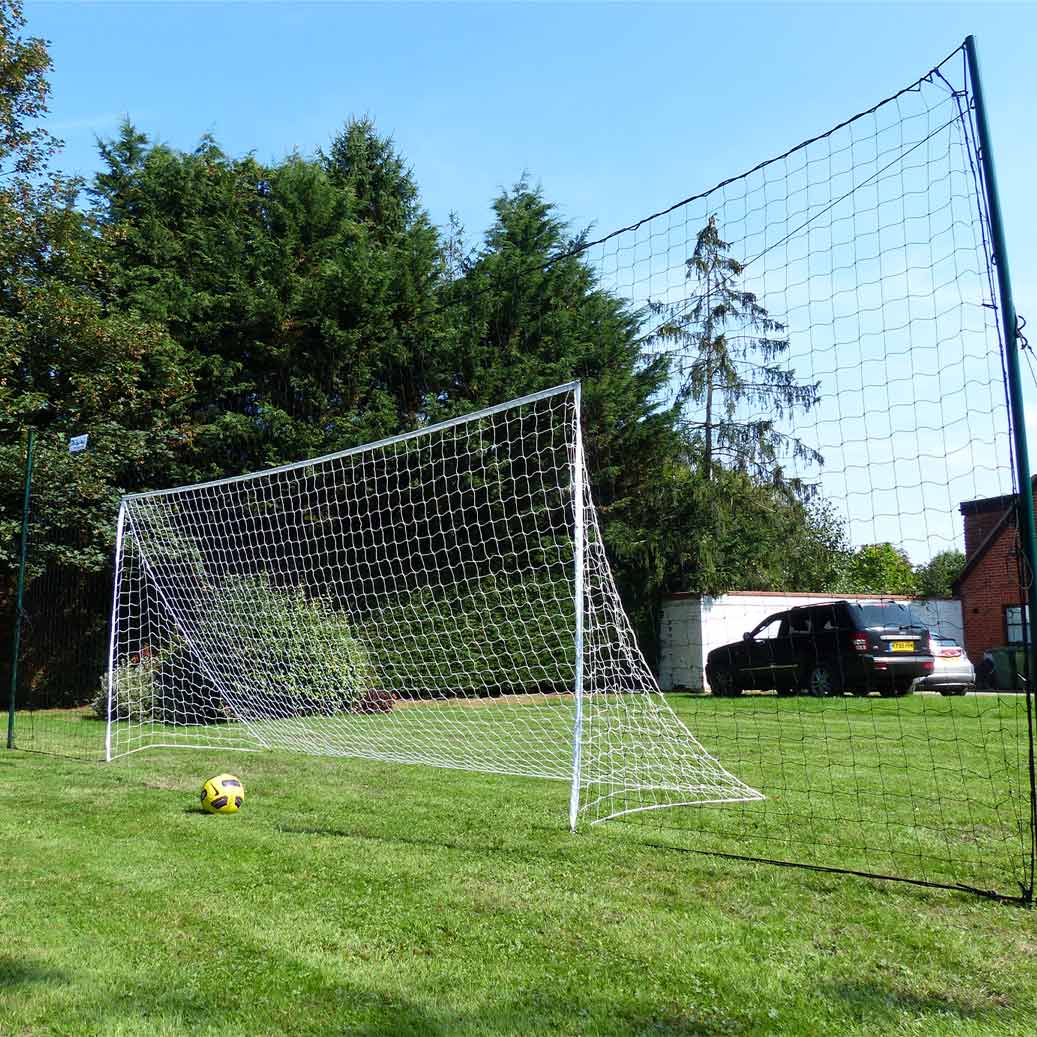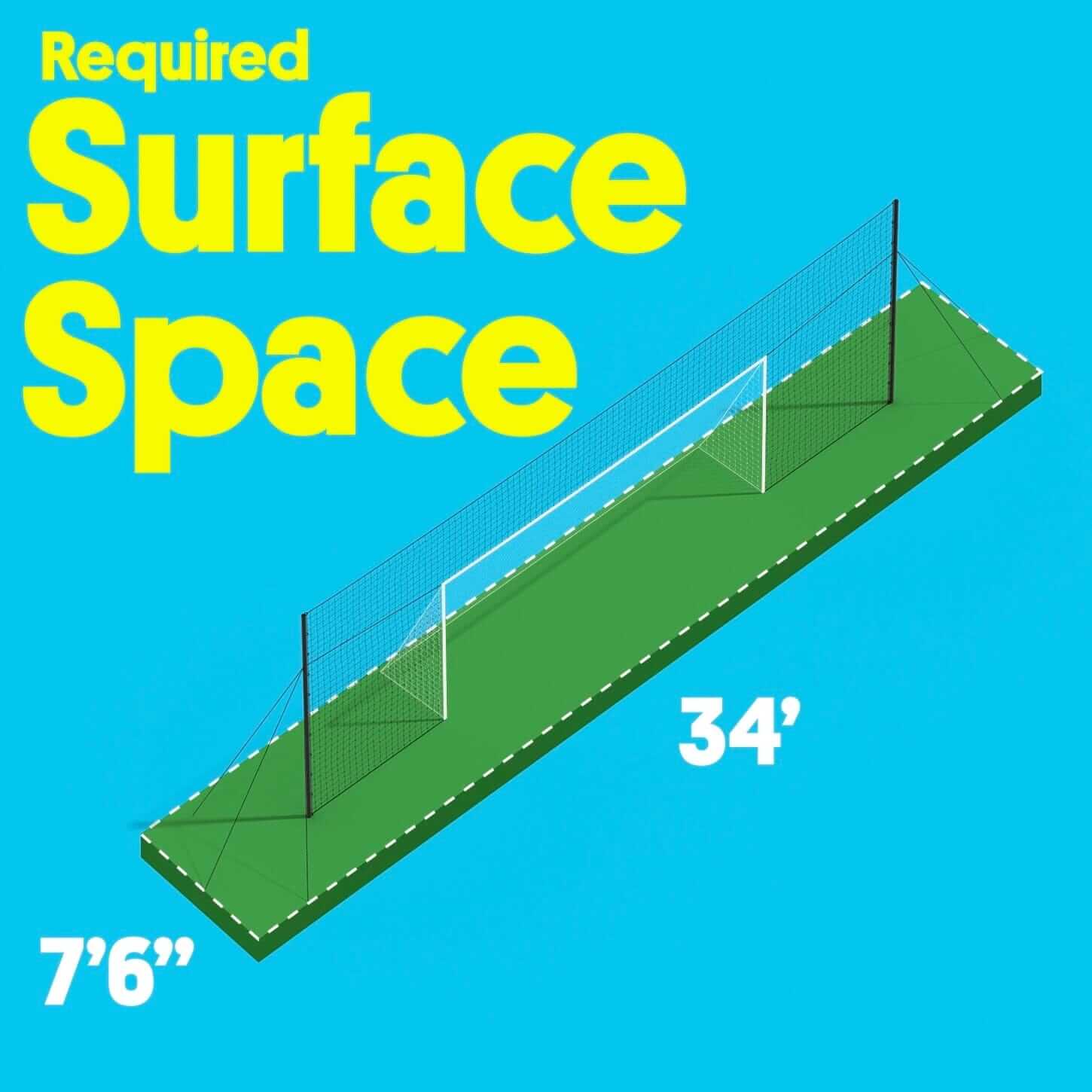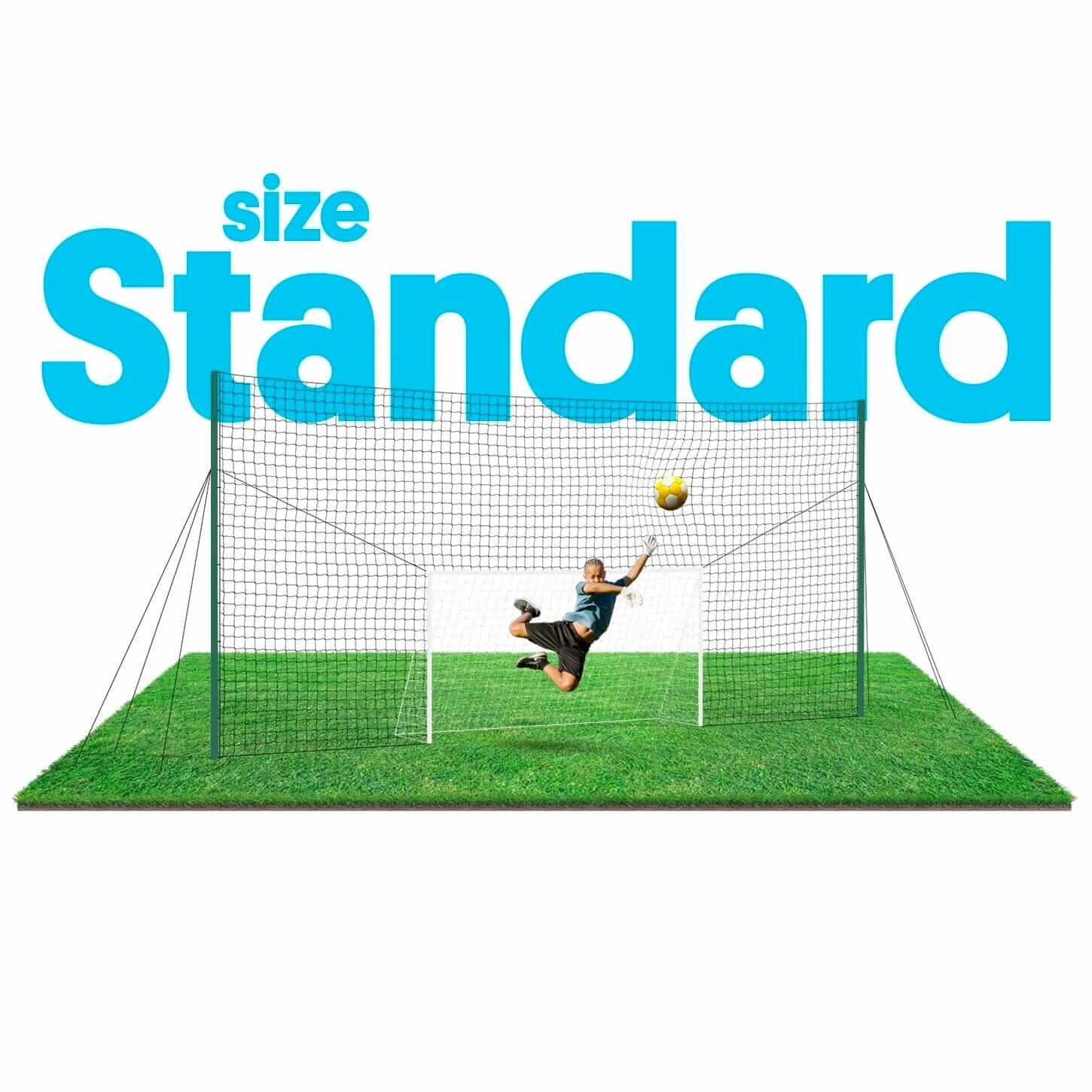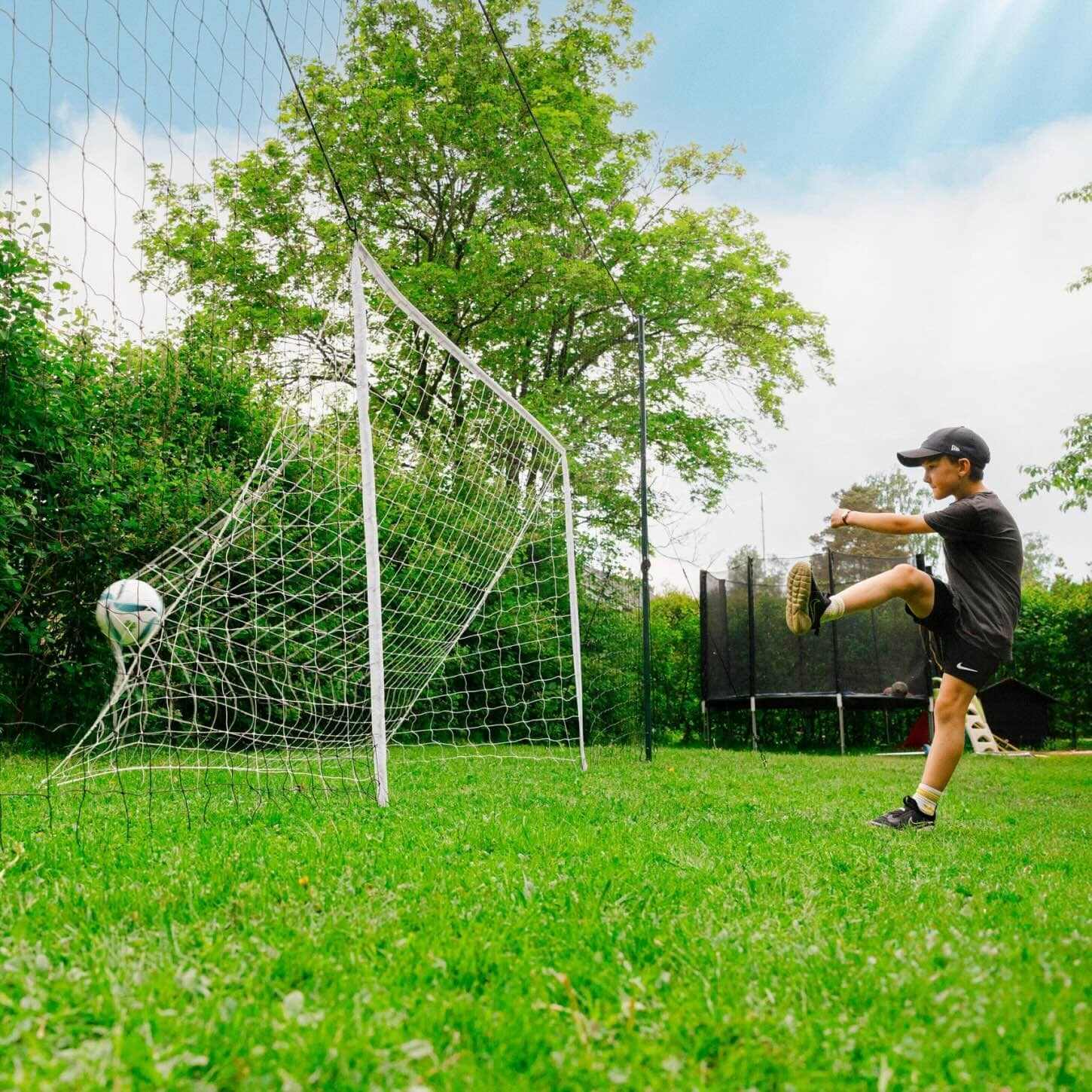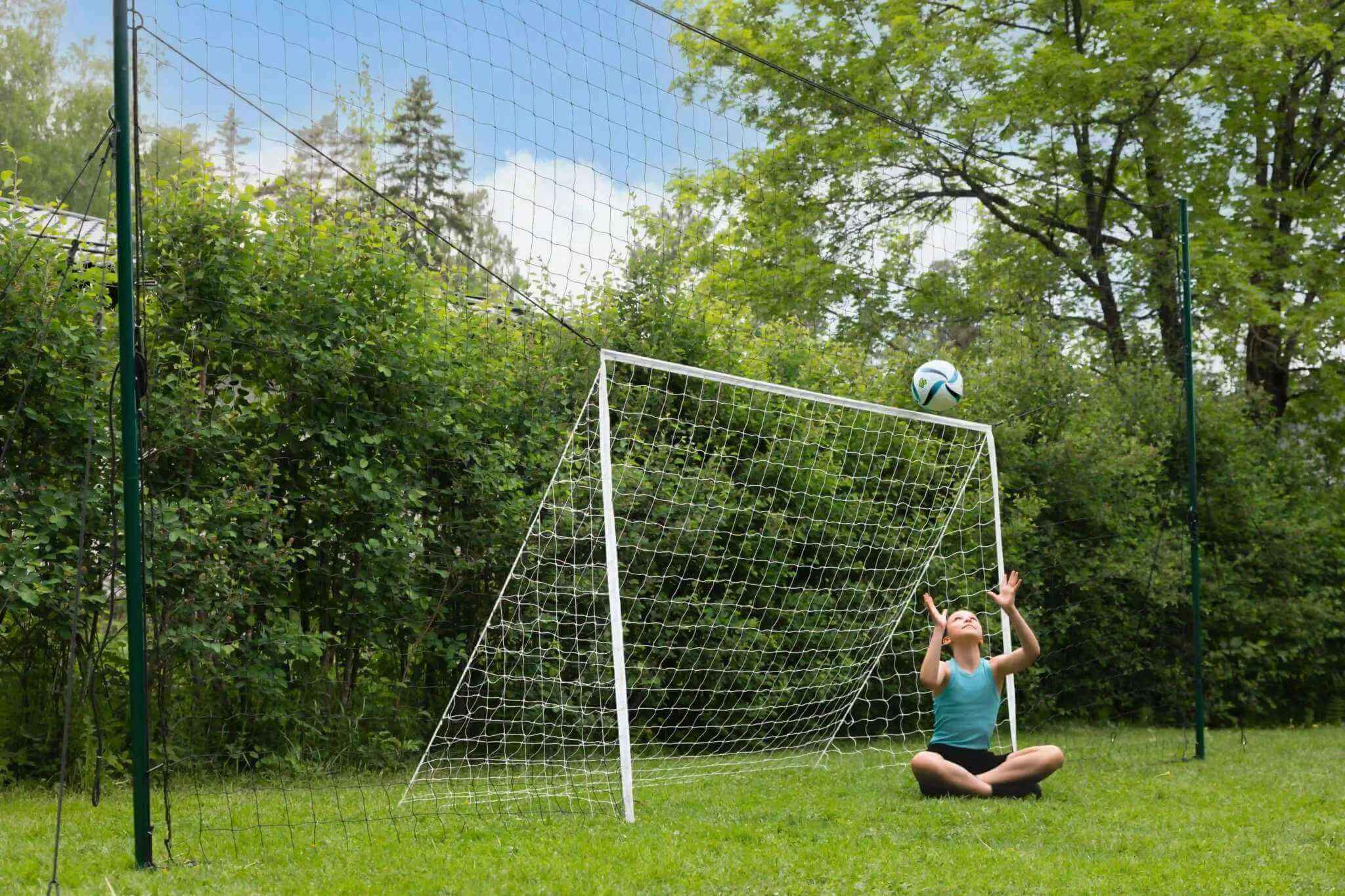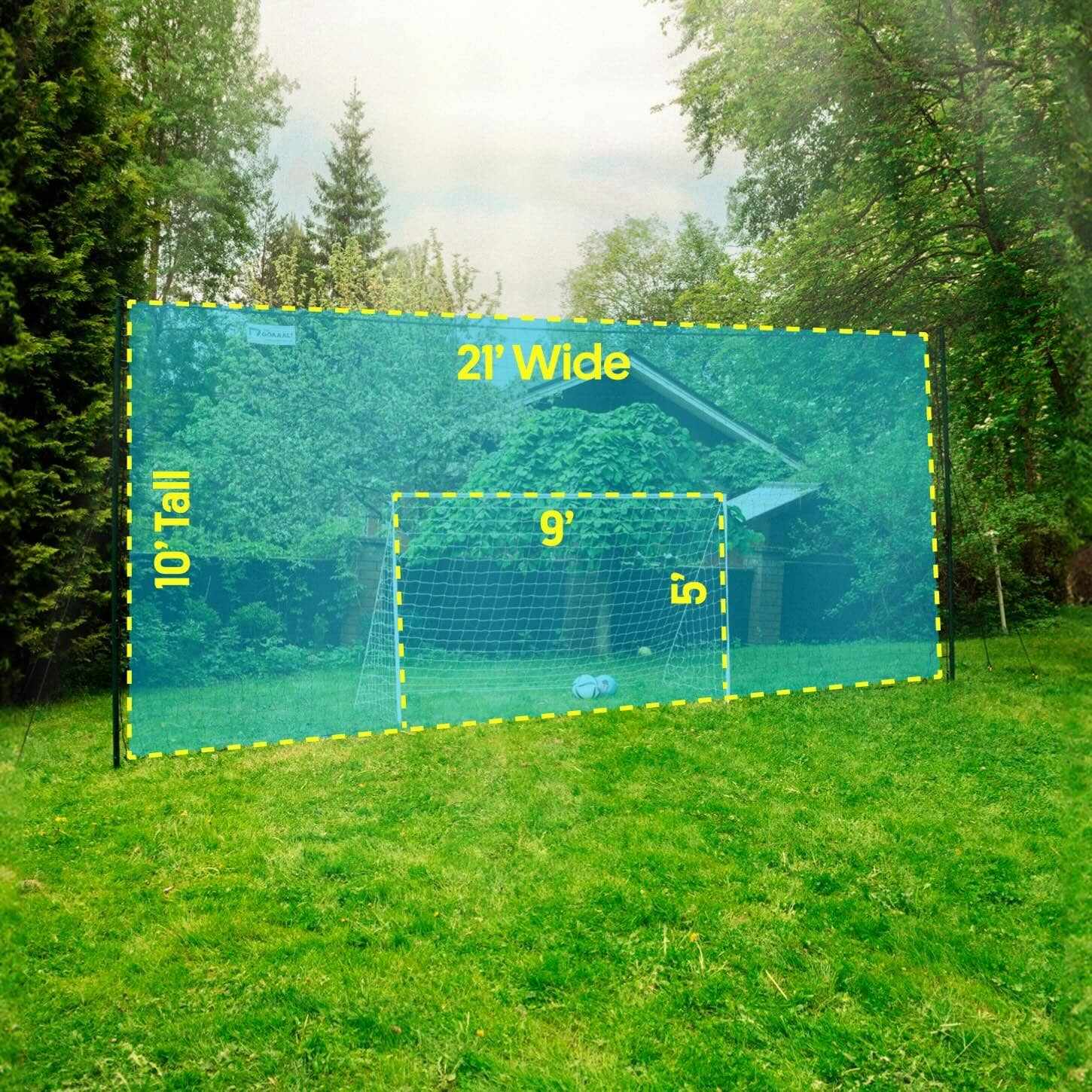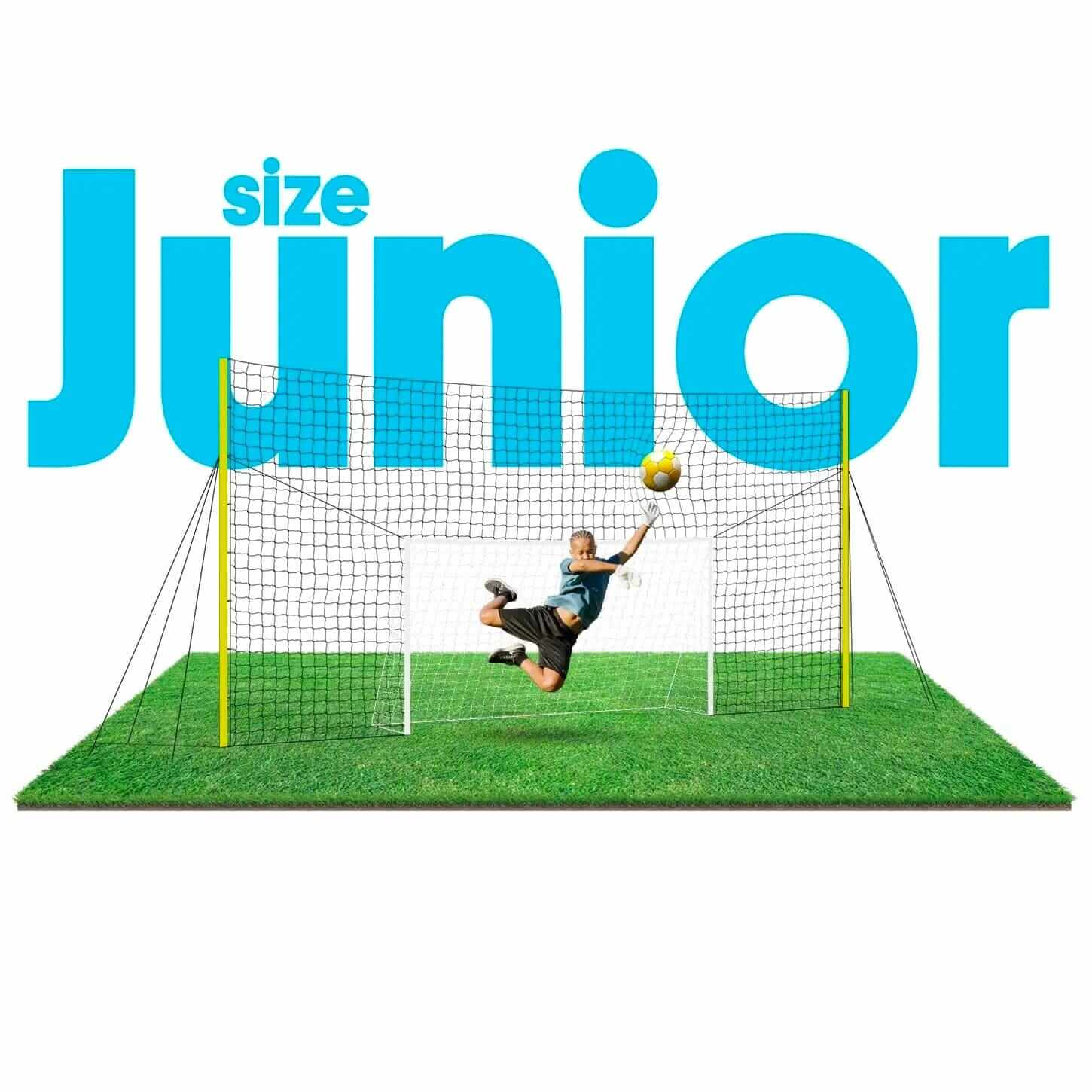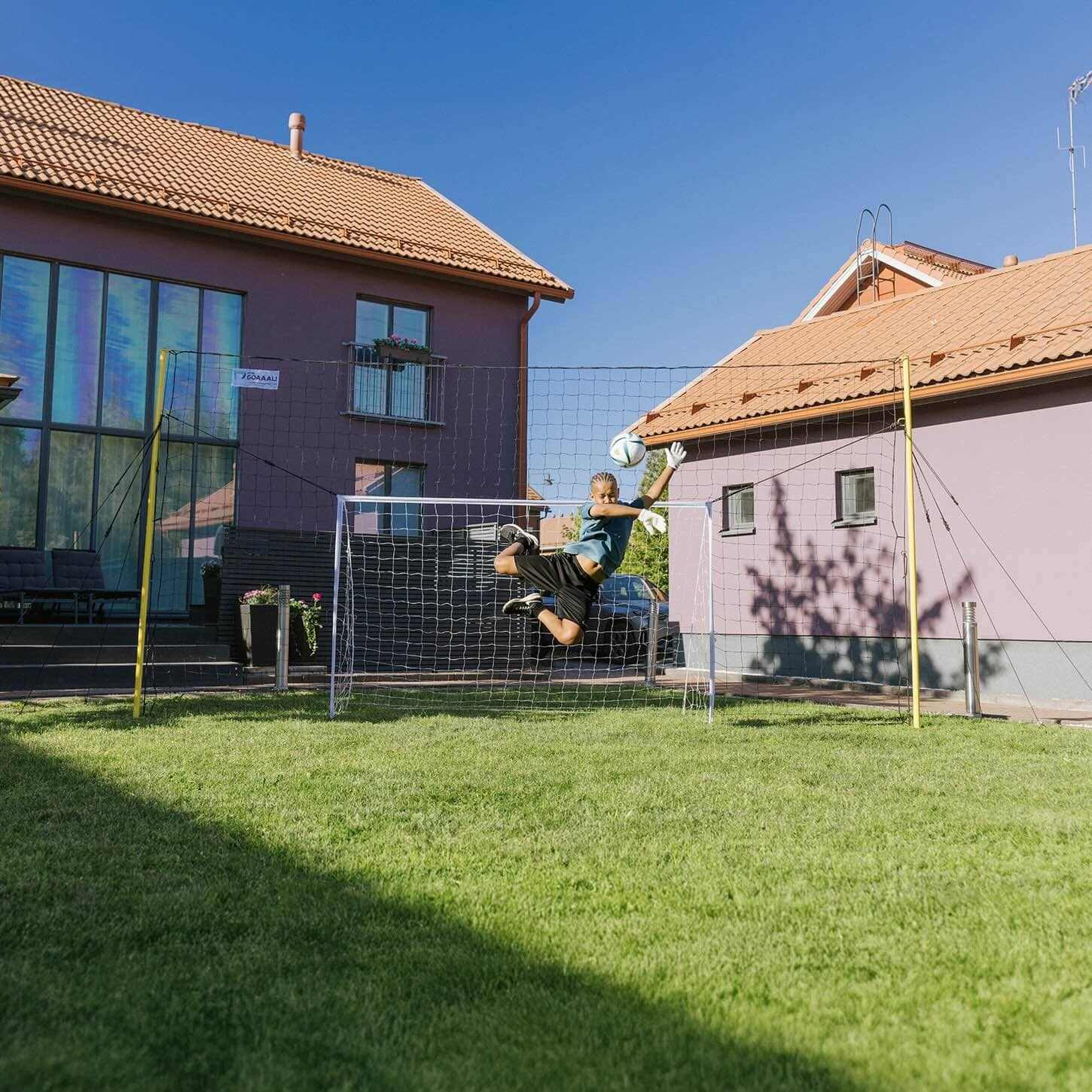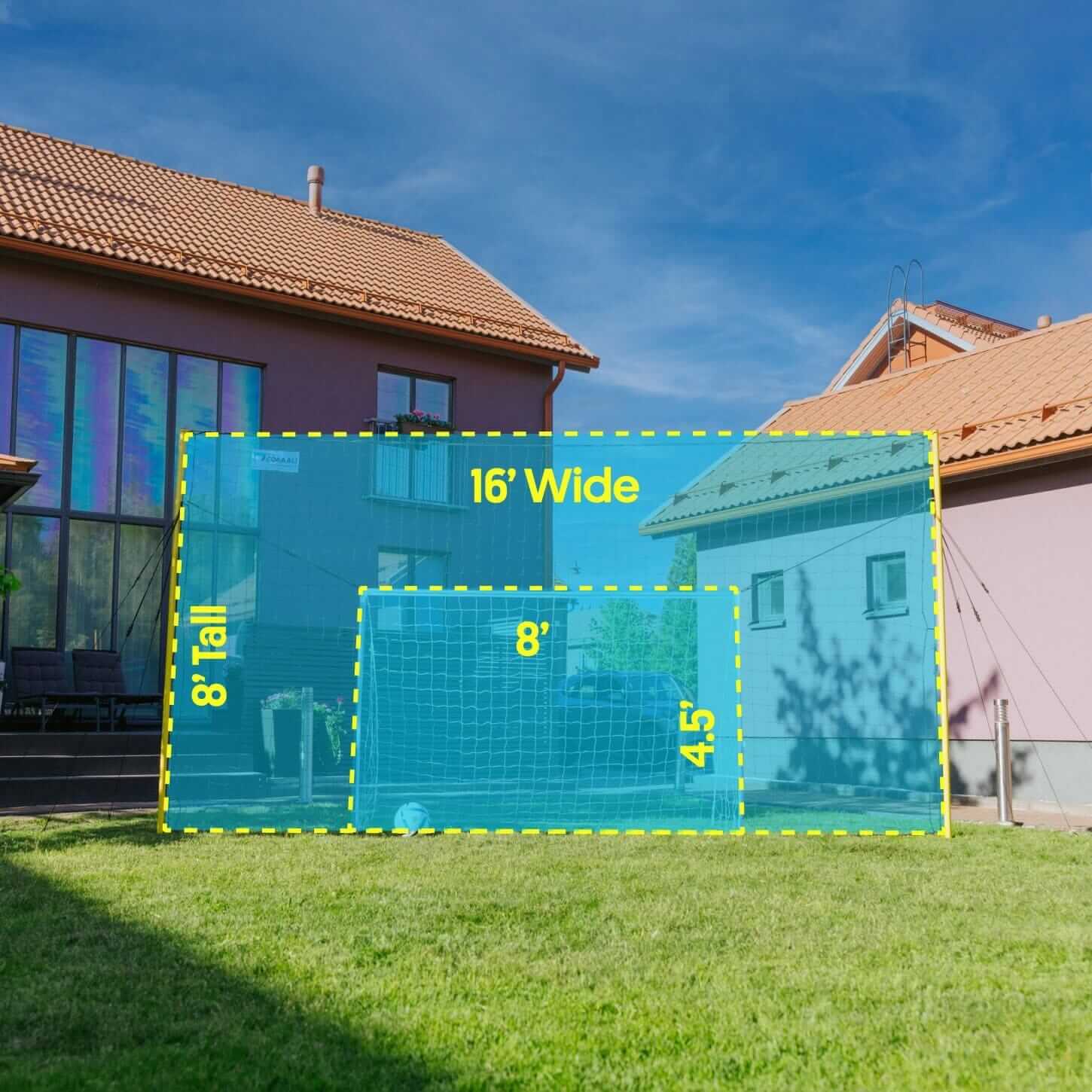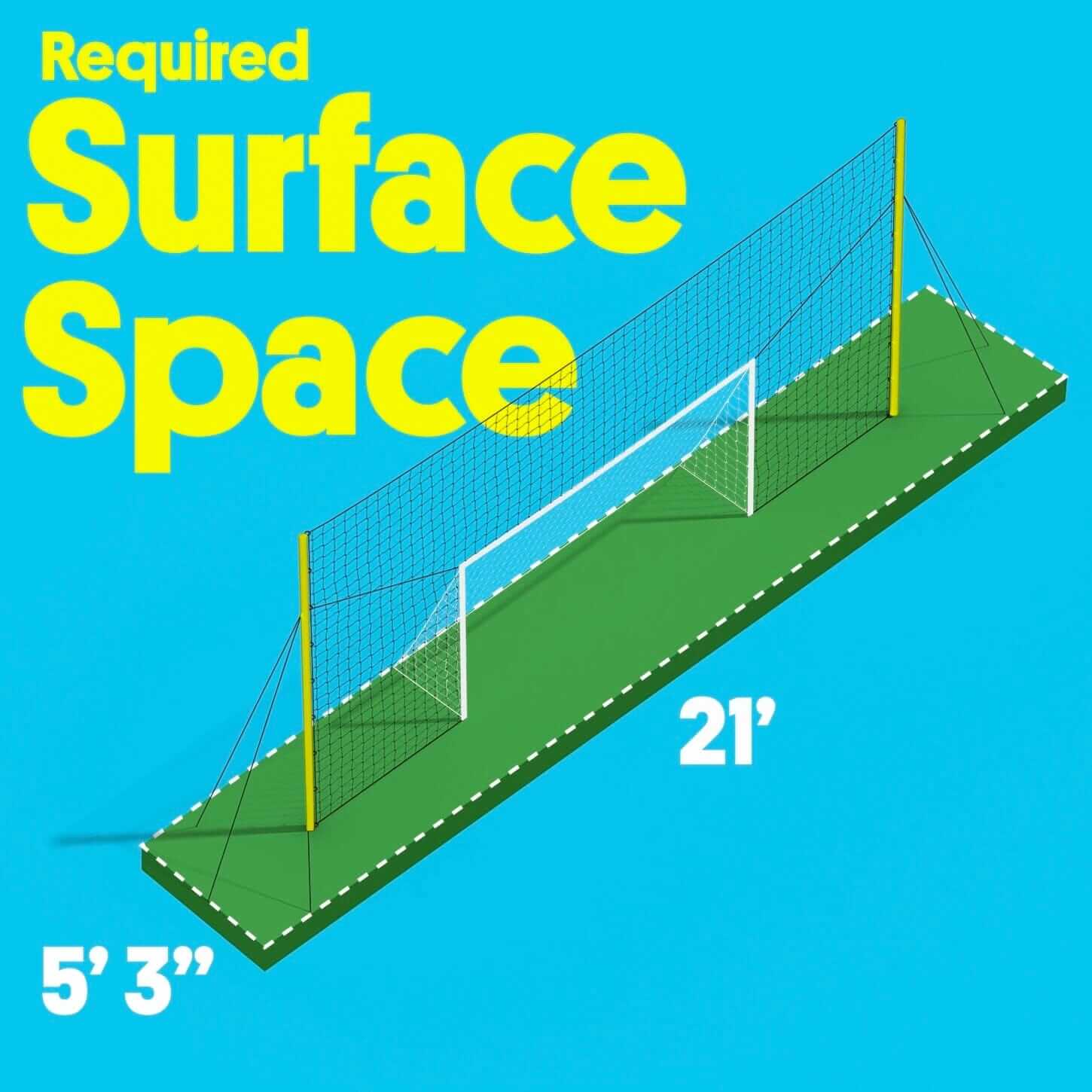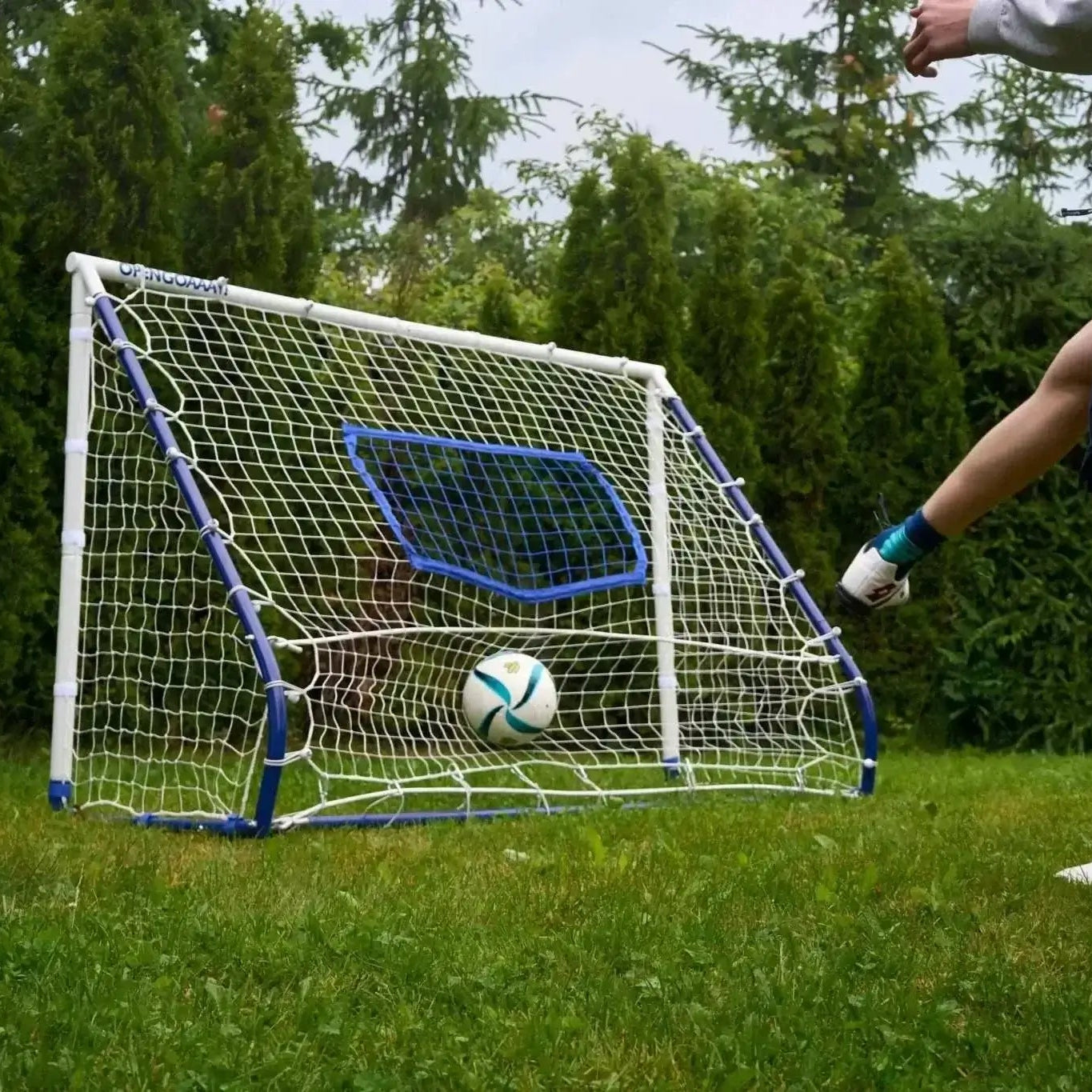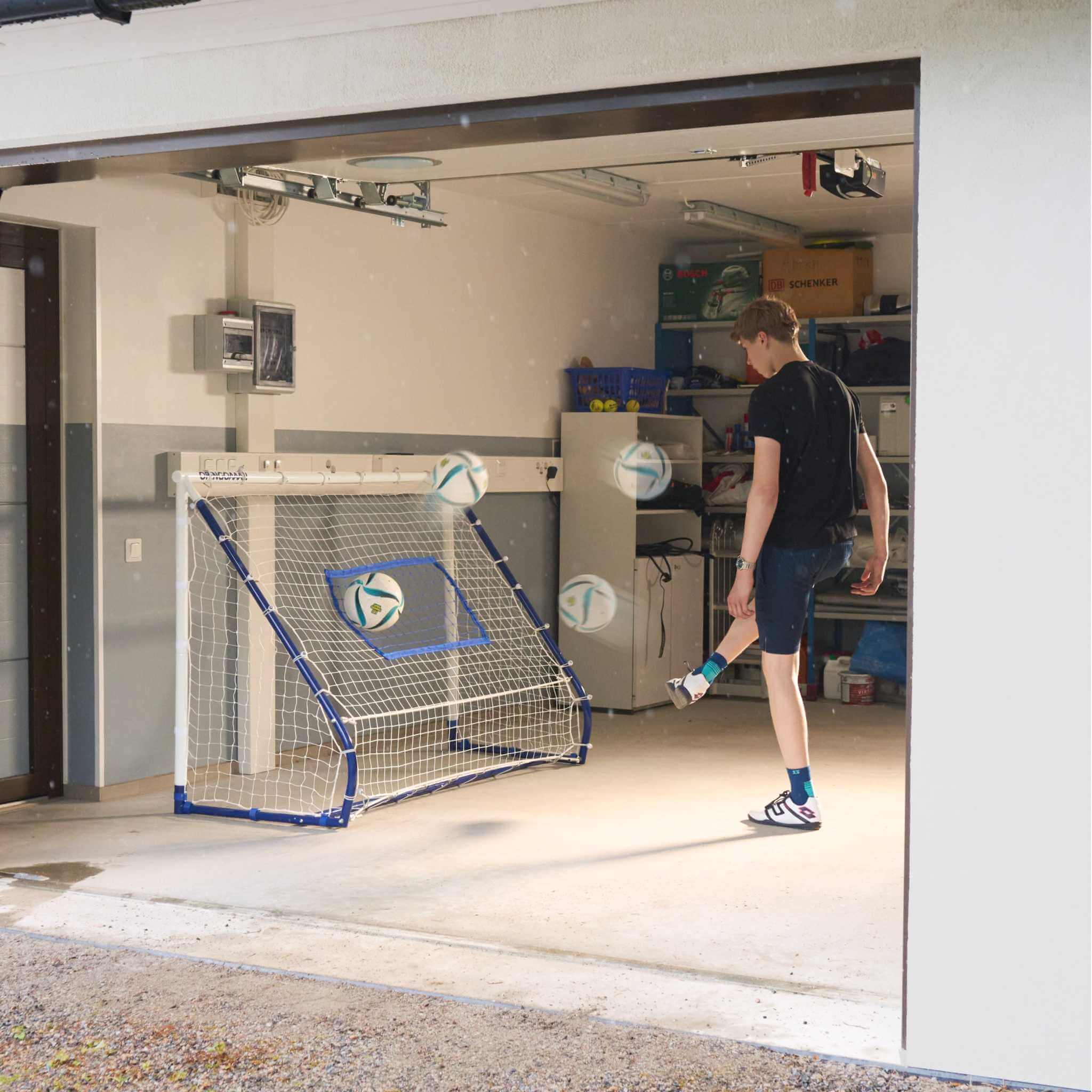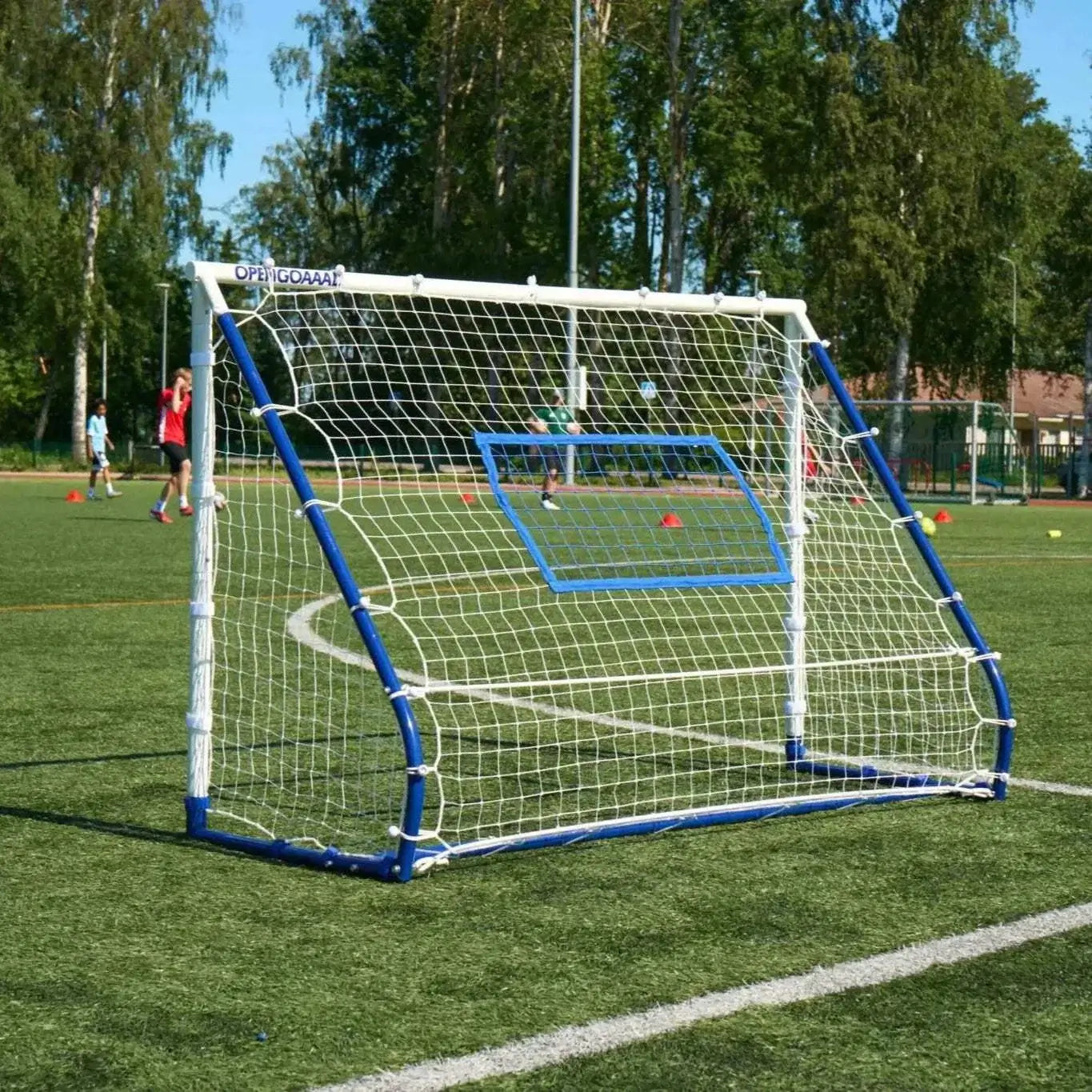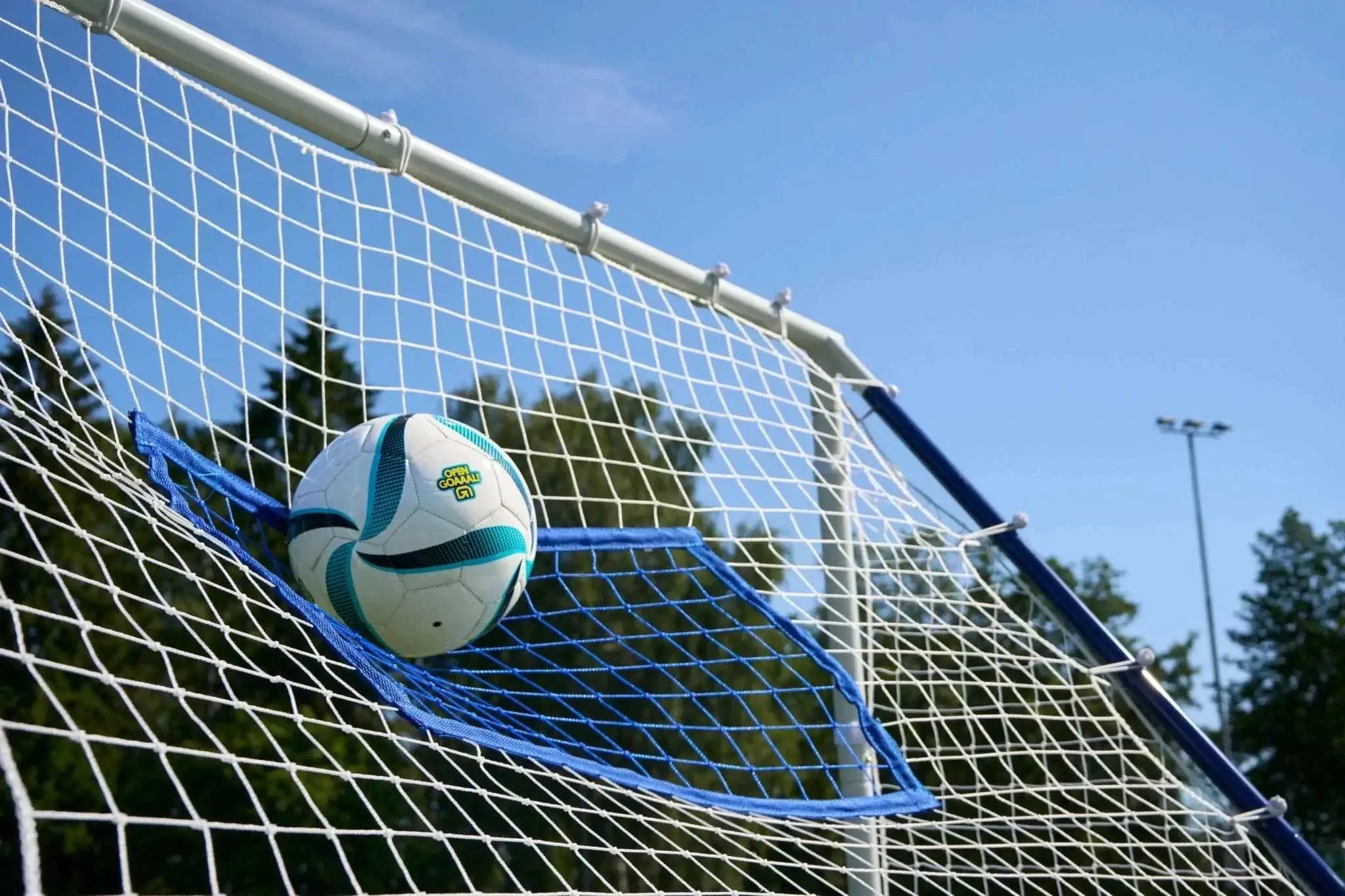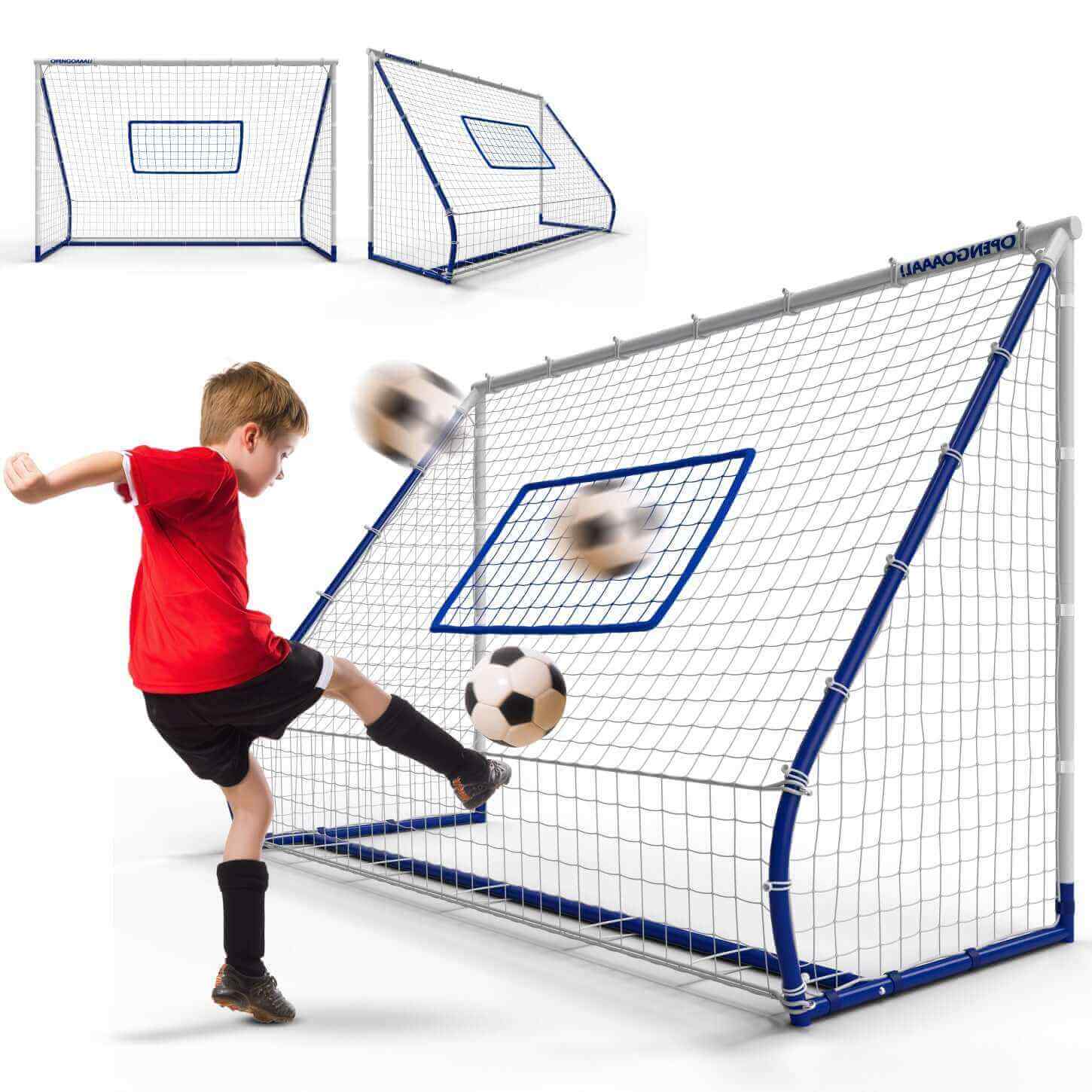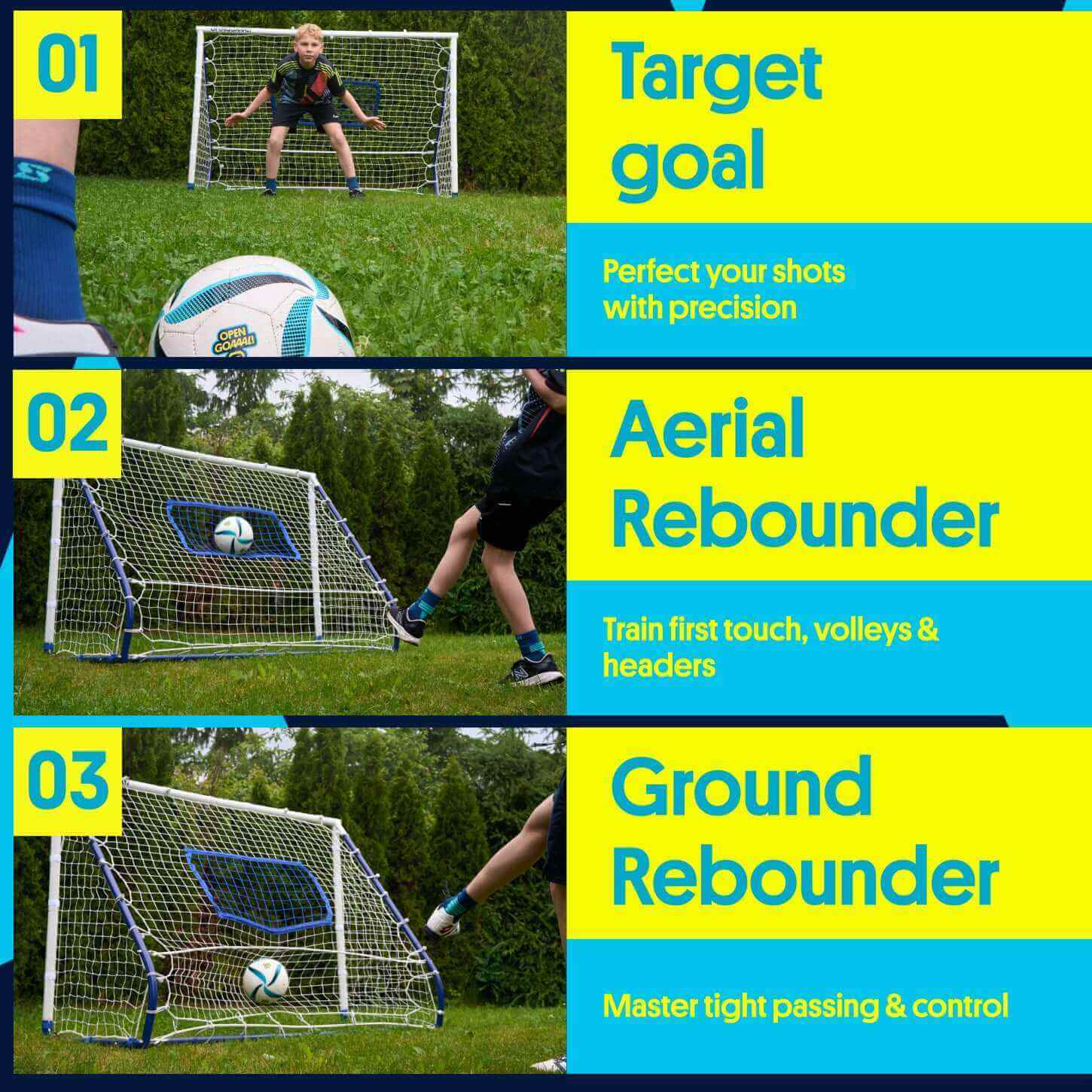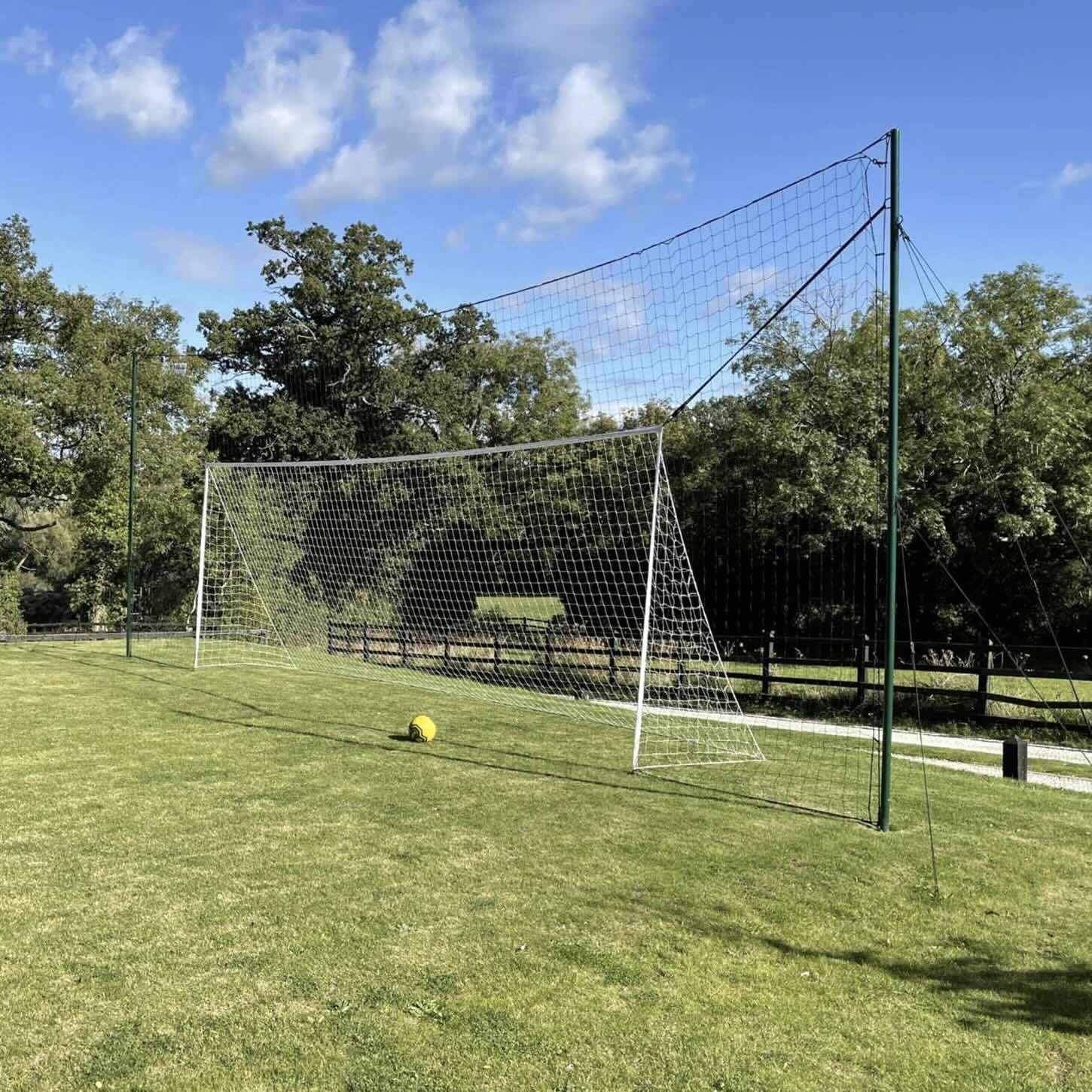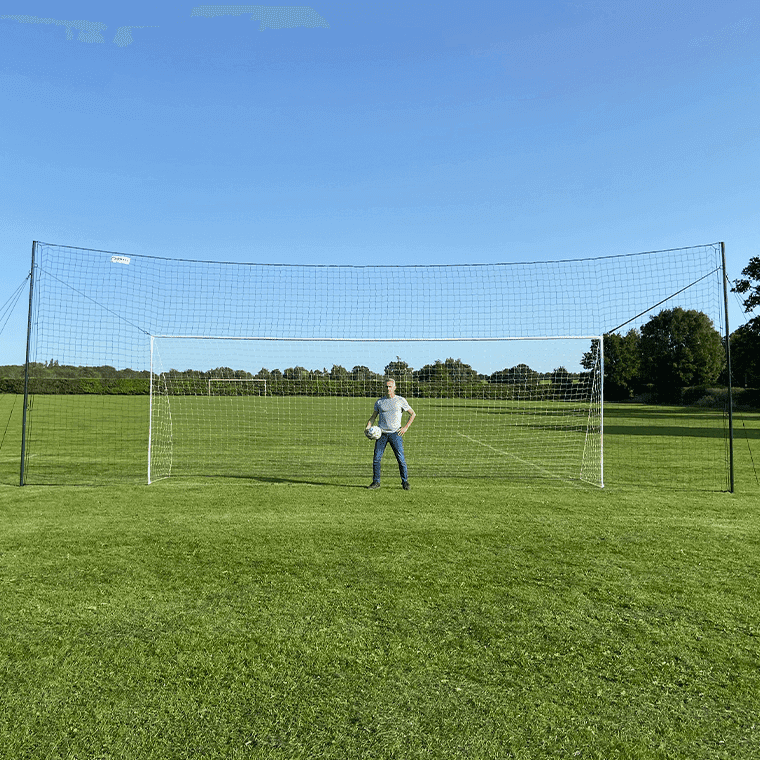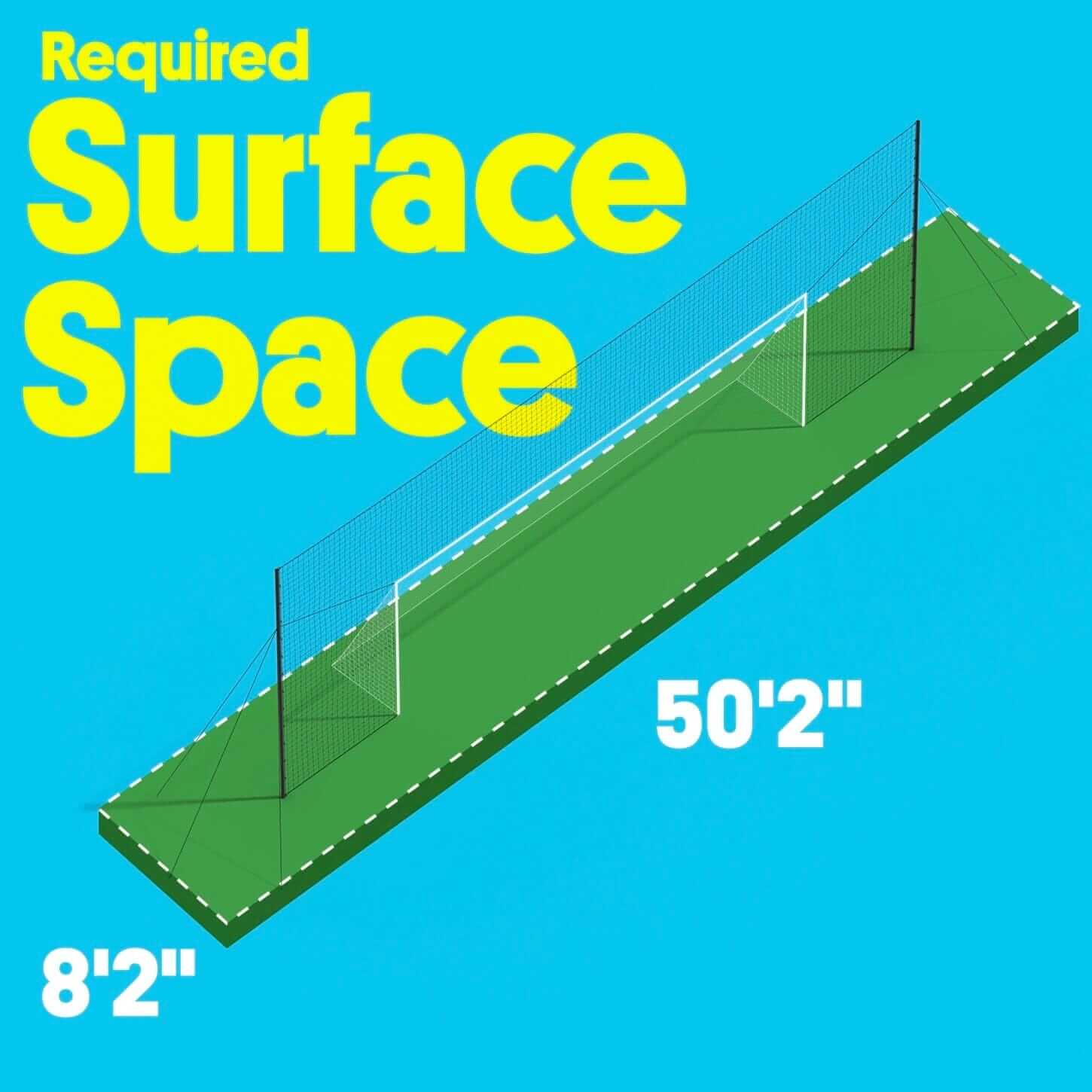Soccer's rules and regulations are maintained and updated annually by an organization known as IFAB (the International Football Association Board).
The board consists of eight members, four of which come from the games governing body, FIFA. The other four are from the representatives of the football associations of England, Scotland, Wales, and Northern Ireland.
Any change in soccer rules should be cleared by three-quarters of the members of the IFAB. While variations may exist at the national and regional league levels, there are 17 basic soccer rules that are standard for any professional soccer match played.
However, the fundamental rules of soccer can be modified to suit veterans, disabilities, grassroots-level, and youth soccer games.
Rule 1: The Field of Play
Soccer can be played on grass or an artificial surface like Astroturf. The pitch must be green in color and rectangular-shaped with two long touchlines and two shorter goal lines. All artificial surfaces should be in line with the FIFA Quality Programme for Football Turf.
A center line divides the soccer field into two equal halves, with a center mark on the midpoint. The center circle is 10 yards in radius. Each goal area is marked by a rectangle 18 yards in length from each goal post along the goal line and 18 yards to the edge of the penalty box.
The goal is made of two vertical posts 8 yards wide and 8 feet high. The penalty spot is fixed at 12 yards perpendicular to the center of the goal.
There are no fixed lengths to a soccer field in terms of length and width. Instead, there are maximum and minimum limits that a field must fall within. A quarter of a 1-yard circle marks the corner area.
All lines should be 5 inches (12 cm) in width and measurements are taken from the outside of each line.

Rule 2: The Ball
A soccer ball must be spherical with a circumference in the range of 27 to 28 inches. The pressure should be between 8.5 lbs./sq inch to 15.6 lbs./sq inch at sea level.
Modern soccer balls are generally made from lighter materials such as synthetic leather, using polyurethane or polyvinyl chloride. It is stitched around an inflated rubber-like bladder. A defective ball is changed during a game after getting the referees’ permission.
Rule 3: The Players
Matches are usually played between two teams. The number of players in each team is 11, including a goalie. If a team cannot field at least seven players before the start of a match, the game can be ruled a forfeit.
As per the basic rules, a maximum of five substitutions are allowed during a match. However, the exact number of substitutions can vary depending on the competition. A substitute cannot enter the field without the prior approval of the Referee.
Rule 4: Players' Equipment
The necessary equipment which must be worn by all players consists of five items – a shirt, shorts, socks, shin guards, and footwear or cleats. Goalkeepers are permitted to wear tracksuit bottoms instead of shorts.
Use of other forms of protective equipment like headgear, facemasks, and knee and arm protectors that are non-dangerous to the teammates and attacking players is allowed.
If a referee deems that a player's equipment is inappropriate, they can be sent off until the discrepancy is rectified. Players must not wear any material that the referee deems dangerous to themselves or another player.
Rule 5: The Referee
The referee is the ultimate decision-making authority on the field. Their decisions and actions are final and should be respected. Only they have the power to start and stop playing or decide when disciplinary action needs to be initiated against a player or official. All decisions are based on the laws and the ‘spirit of the game’.
The referee also acts as the timekeeper and takes disciplinary action against the offensive team, guilty players, and team officials. This includes the power to show red or yellow cards and stop the play if a player is seriously injured.

Rule 6: Assistant Referees and other Match Officials
The other match officials include the two assistant referees on each side of the field – formerly called linesmen. They assist the referee during the course of a game. Their primary job is to determine which team is entitled to a throw-in, corner kick, or goal kick when the ball crosses the sidelines. They can also help in implementing offside rules and alert the referee in case of a serious infraction.
The major professional leagues will also have a 4th official who is responsible for overseeing the substitution process and ball replacements. They also state to the crowd the amount of additional time that the referee adds at the end of each half.
In some competitions, such as the Champions League and the Europa League, there will be two further assistant referees. They are positioned on each of the goal lines and are responsible for observing incidents that occur near the goals.
The advent of technology has also seen the increasing introduction of Video Assistant Referees (VAR). These are officials based remotely who will watch replays of significant incidents like penalty appeals on television. They advise the referee on the field on the decisions taken.
Rule 7: The Duration of the Match
A soccer match consists of two-45 minute halves with a halftime interval between. The interval should not be longer than 15 minutes in length. Referees can, at their discretion, add extra time to each half for make-up for injuries, substitutions, and infringements such as time-wasting.
In professional leagues, the amount of time added to each half is usually displayed by the 4th official. However, any time shown is indicative only; it is up to the referee how much time is played. In case of a penalty kick, the half is extended till the kicker takes the penalty shot.
Rule 8: Start and Restart of Play
The referee determines the kick-off is determined by a coin toss. The team that wins the toss has the choice of whether to kick off or which end they wish to attack in the first half. In the second half, the ends are changed. Once a team scores a goal, the opponents restart the game with a kick-off.
A drop ball can also restart a game in instances where play has been stopped due to no fault of either side. This can happen in the case of a severe injury to a player, a defective ball, or an intrusion on the pitch by spectators.
Rule 9: The Ball In and Out of Play
The ball is deemed to be out of play when its circumference has wholly crossed the goal line or the touchline. Otherwise, the ball is considered to ball infield at all times, unless the referee stops the play. The ball remains in play, even if it touches a match official or bounces off the goalposts or the corner flag.
A game can be restarted in eight ways, depending on which way it went out of play originally. These are kick-off, goal kick, throw-in, corner kick, direct free kick, indirect free-kick, penalty, and by dropping the ball.

Rule 10: How to Outcome of a Match is Decided
The team that scores the most goals during a match is the winner. A goal is scored when the circumference of the ball has completely crossed the goal line and the referee signals a goal.
If the ball is thrown directly inside the opponent’s goal by a goalkeeper, the referee awards a goal kick.
In tournaments like the World Cup, if the scores are level at the end of 90 minutes, 30 minutes of extra time can be played to try and find a winner. If the scores are still tied at the end of that period, a penalty shoot-out may be held to determine the outcome of the match.
Rule 11: Offside
Probably the most controversial of all the rules of soccer are those governing offsides. This makes it important for soccer coaches to make sure that the players are aware of these rules.
An offside is declared in the following situations:
- If a player is in an offside position if any part of their head, body, or feet is in the opponent’s half.
- If these body parts are nearer to the opponent's goal line than the soccer ball and the second-last opponent.
Note, the arms and hands are not considered for an offside offense. The referee can also award an indirect free kick in case of an offside. In recent games, advanced tracking technology is being used to determine offside.
Rule 12: Fouls and Misconduct
Fouls and misconduct are acts committed by a player, that, in the opinion of the referee, are contrary to the laws of the game. These include charges, kicks, pushes, strikes, or trips or attempts to perform such actions.
A player can be guilty of both carrying out a foul and committing misconduct. There is a prescribed list of offenses that merit a direct or an indirect free kick or dictate when a yellow or red card may be issued. In the event of a red card, a player must leave the field immediately, and cannot be replaced.
Rule 13: Free Kicks
There are two types of free kicks in soccer – direct and indirect free kicks. With a direct free kick, the player taking the kick can score directly, without the ball touching another player. However, in an indirect free kick, the ball must touch another player before a goal can be scored.
A direct free kick awarded to the attacking side in the opposition's penalty area results in a penalty. When a free kick is awarded, all players of the opposing team must retreat at least 10 yards before the kick is taken.
Rule 14: The Penalty Kick
The referee will award a penalty when an offense worthy of a direct free-kick is committed by a player within their penalty area. This can be a foul or a deliberate handball.
The player taking the penalty must place the spot on the penalty kick and is allowed a single shot on goal to score. When the ball is kicked, the defending goalkeeper needs to have at least a part of one foot behind or in contact with the goal line.
All other players apart from the kicker and goalkeeper should remain at least 10 yards away from the penalty spot. The referee may, at their discretion, order a penalty to be retaken if they deem there has been an infringement. This may be an encroachment in the area, or if the goalkeeper has moved.
Rule 15: Throw-ins
A throw-in is given when the team that is in possession or has last touched the ball has caused it to clear the field of play over the touchline. When taking a throw-in, a player must face the field of play and keep both feet fixed on the ground. The throw needs to be made overhead with both hands from the point where the ball left the field.
Scoring a goal from a throw-in is not allowed. If the ball enters the opponent team’s goal, a goal kick is awarded. In case the ball enters the thrower’s goal, the referee awards a corner kick. During the throw, the opponents must stand 2 yards away from the throwing point.

Rule 16: Goal Kicks
A goal kick will be awarded when the team on the offense plays the ball out of play over the goal line. However, before the ball passes over the line, the last touch should be made by the player of an attacking team.
To restart the game, any player of the defending team must place the ball on the six-yard goal line and kick the ball back into the game. The opponents need to stay outside the penalty area till the ball is in play.
Rule 17: Corner Kicks
A corner kick is awarded to the attacking team when their opponents play or deflect the ball over their goal line. The ball should be placed within the quadrant by the corner flag and kicked back into play by a member of the attacking team.
The defending team should not encroach closer than five yards to the corner kick taker. Players can score directly from a corner.
Final Thoughts
Knowing the basic soccer rules is extremely important for players, coaches, and also for soccer parents. Note, these laws are subjected to various situations and may not be able to deal with every possible scenario during a game. Even so, the players and coaches need to respect the referees’ decisions at all times.
Keep in mind that soccer rules and regulations can be modified for various regional leagues and tournaments. Make sure to keep yourself updated by inquiring from the coach, teammates, or officials.


